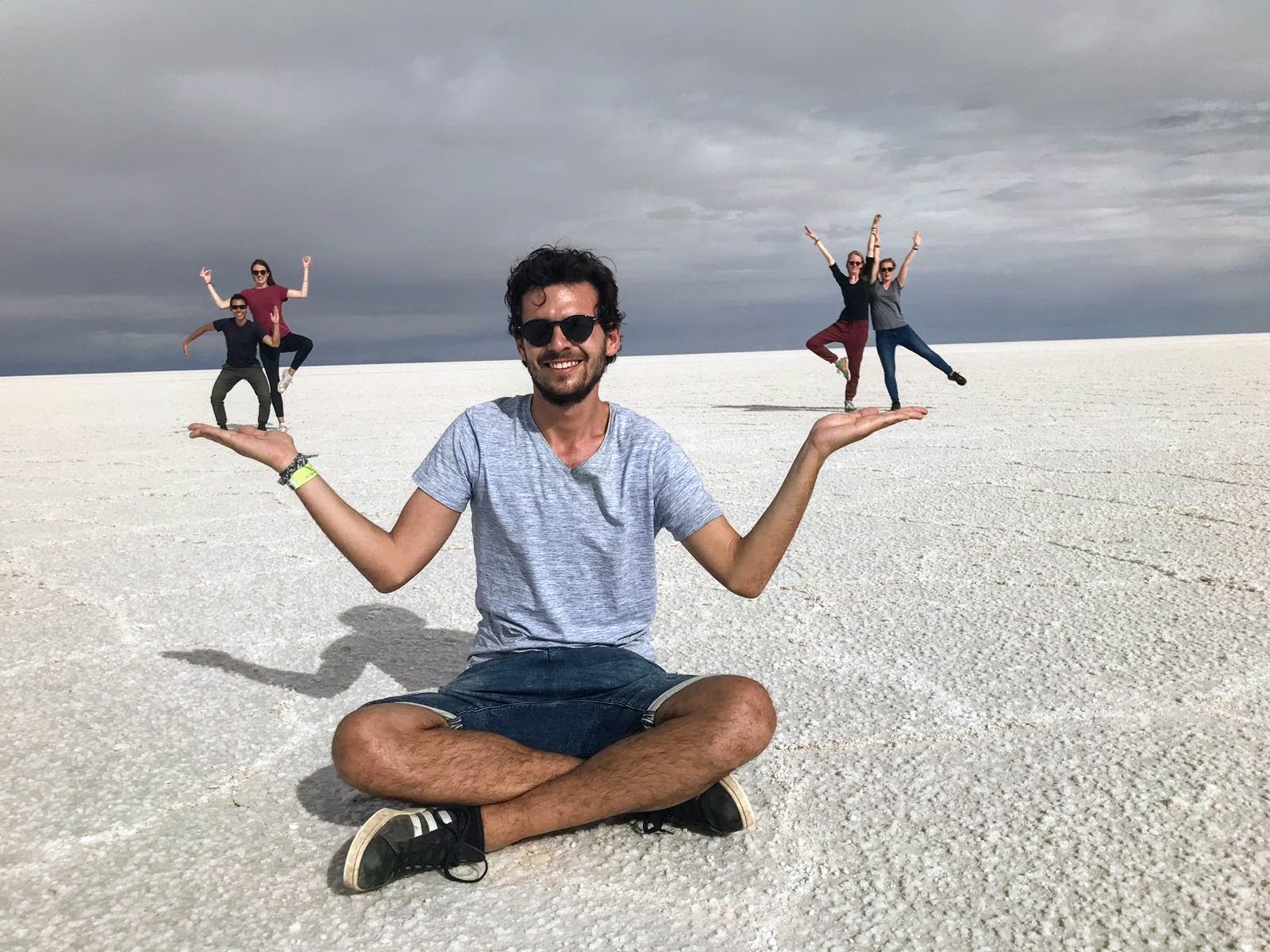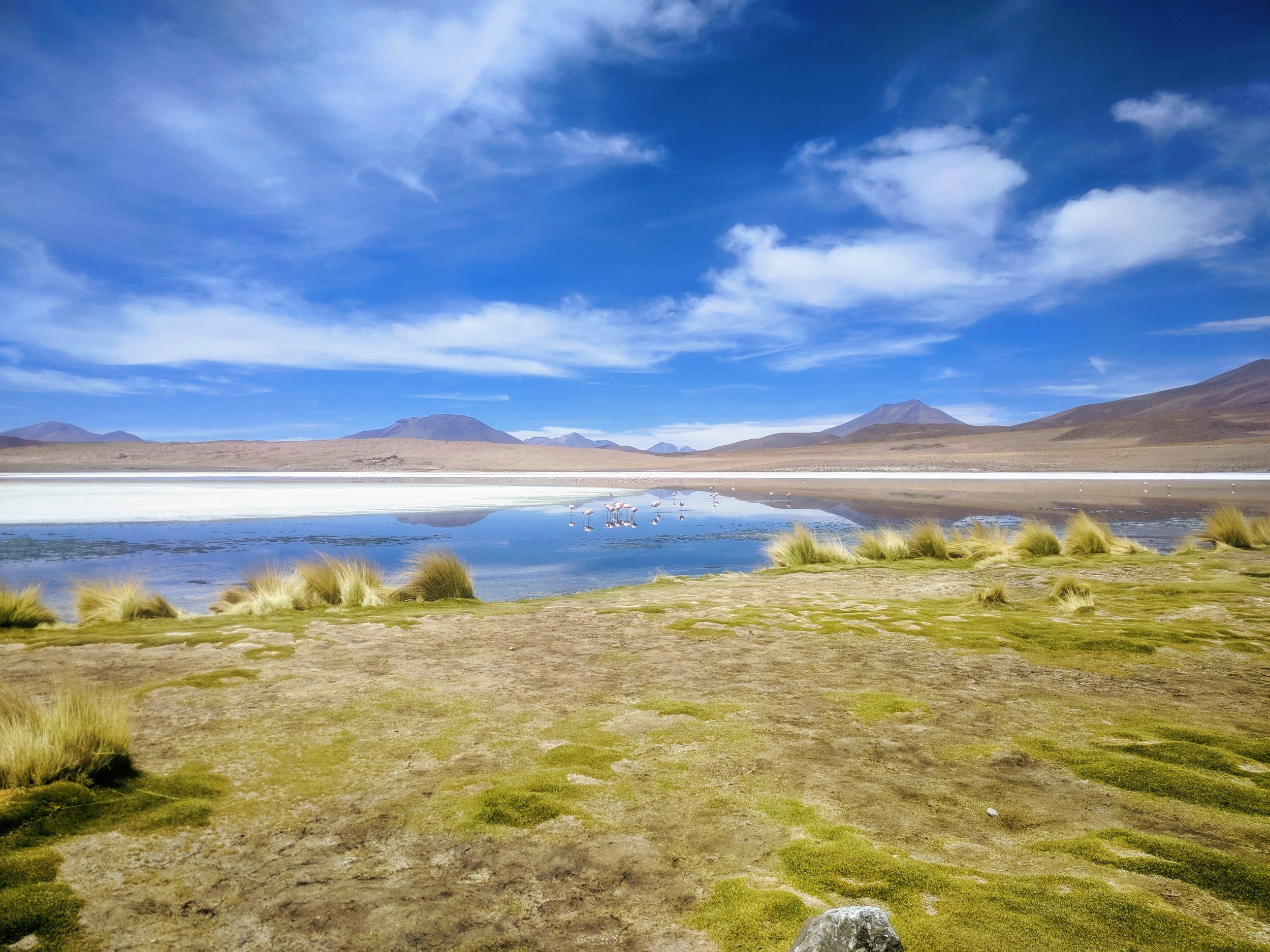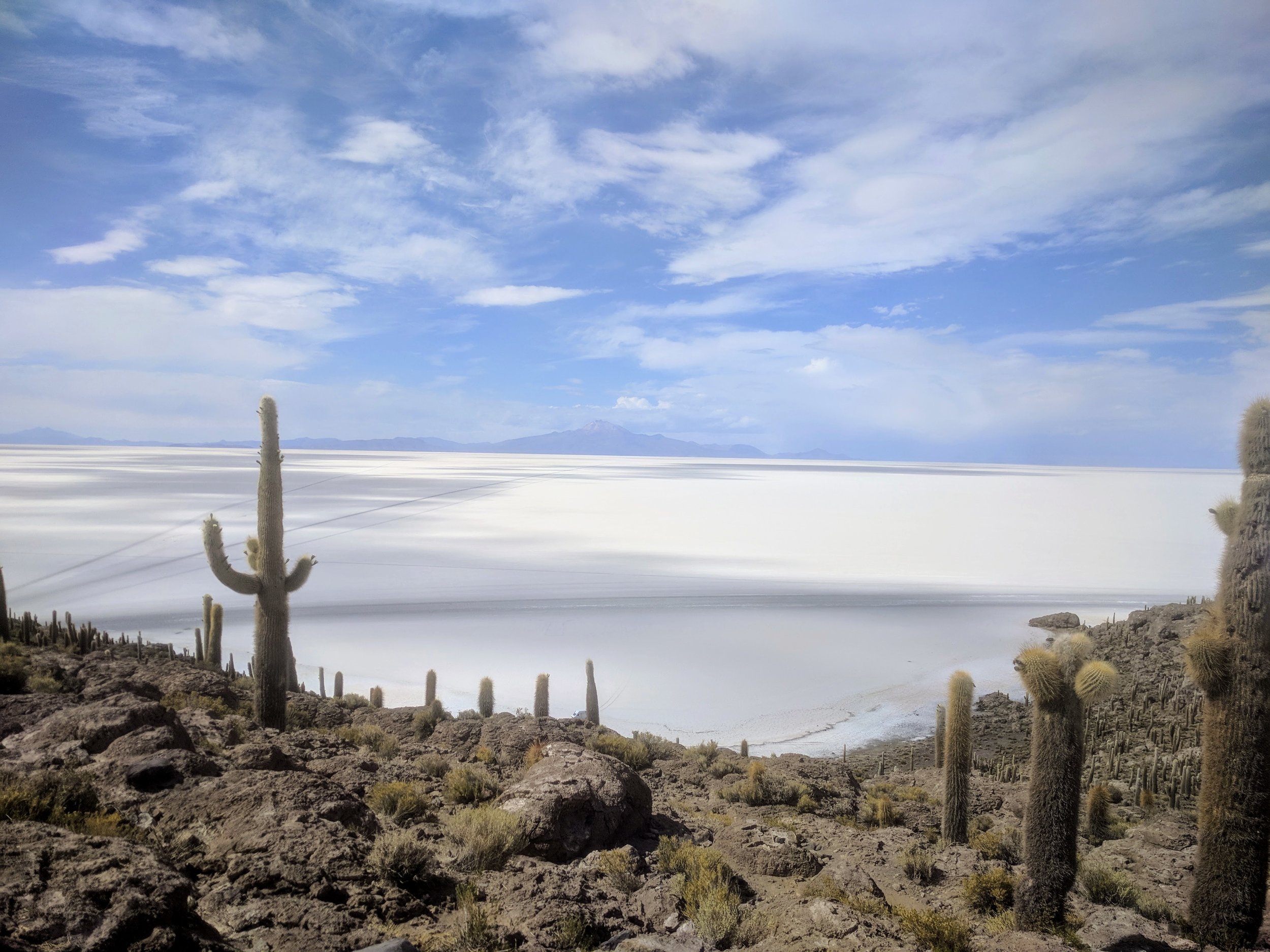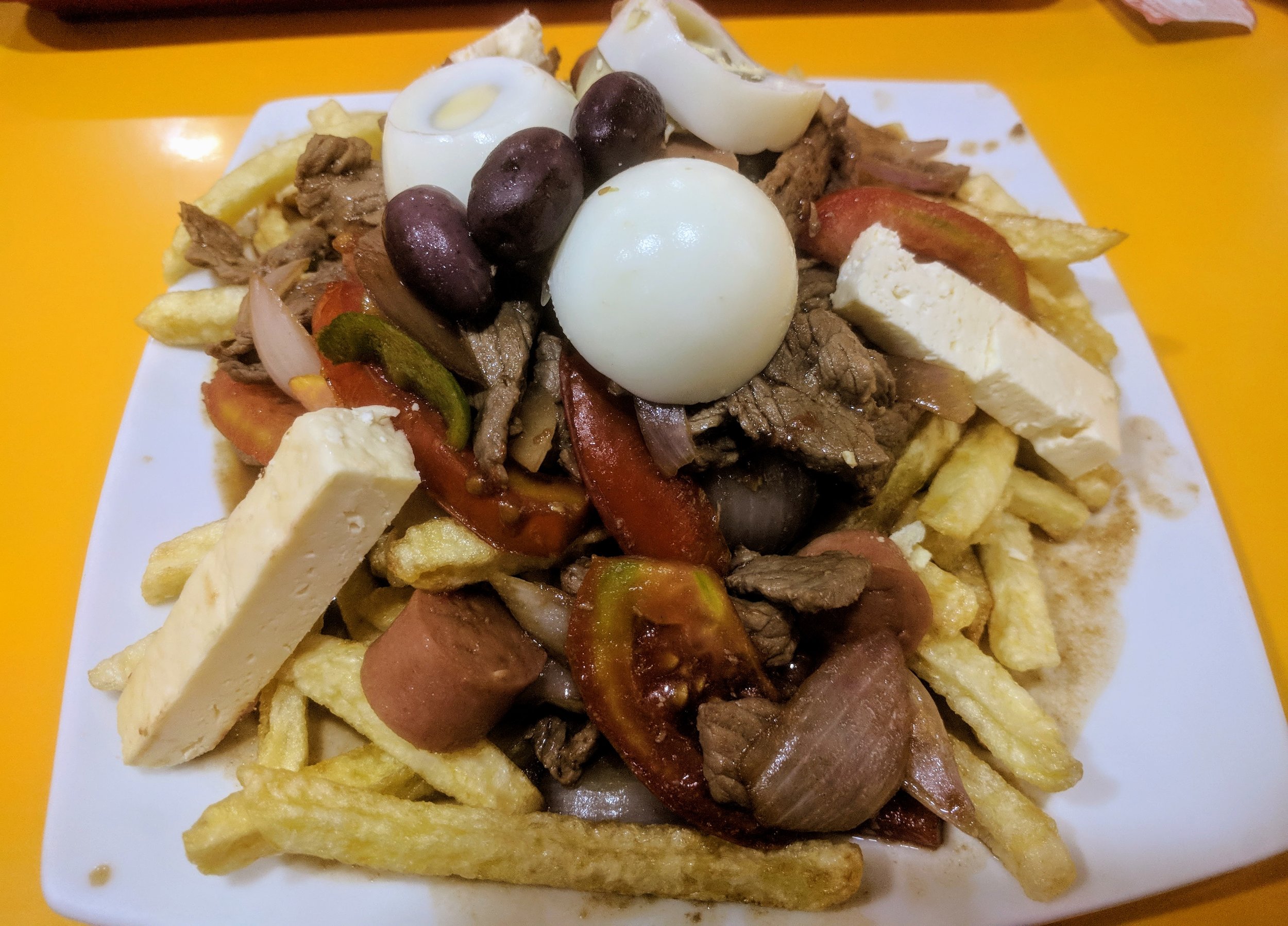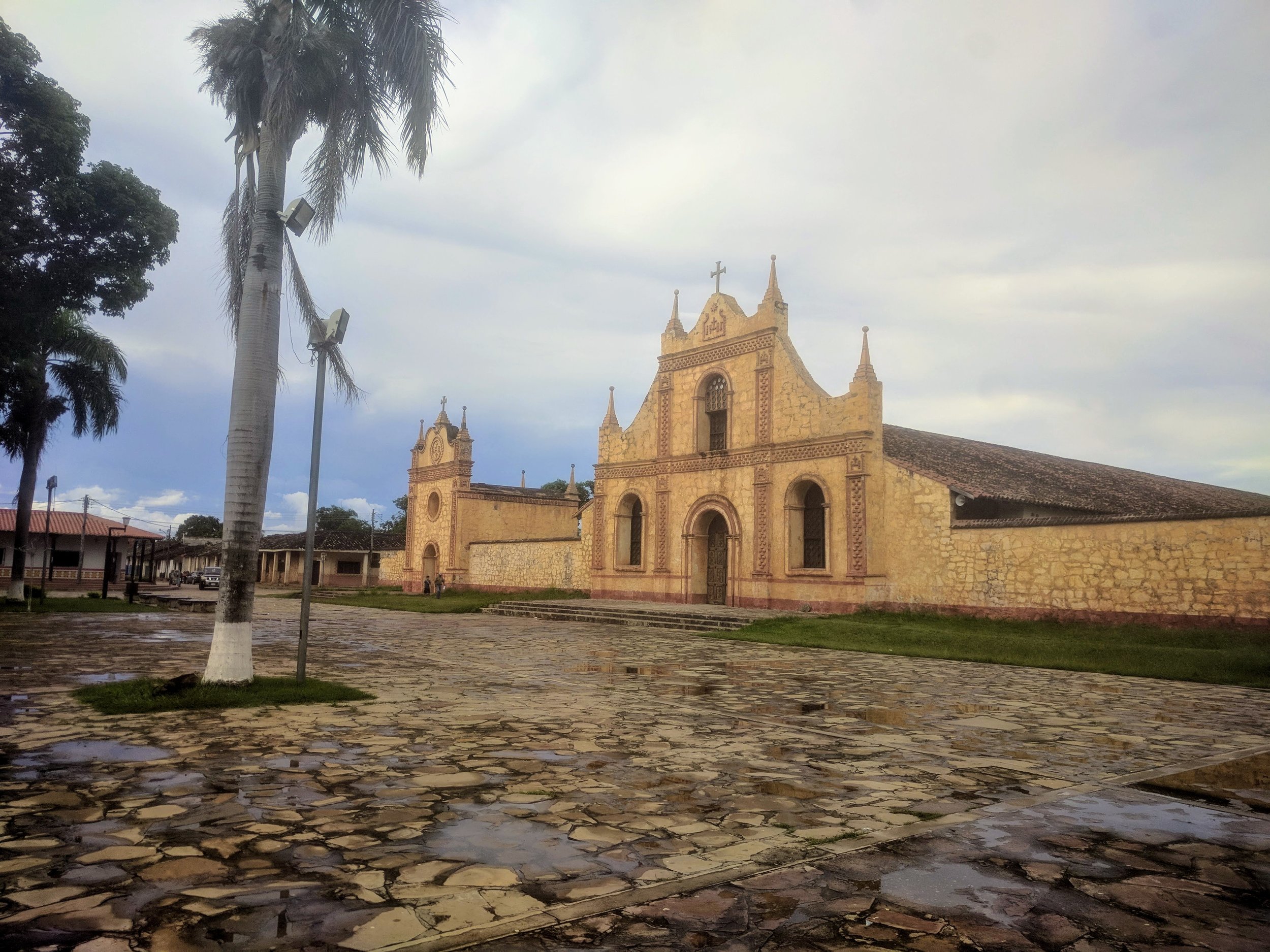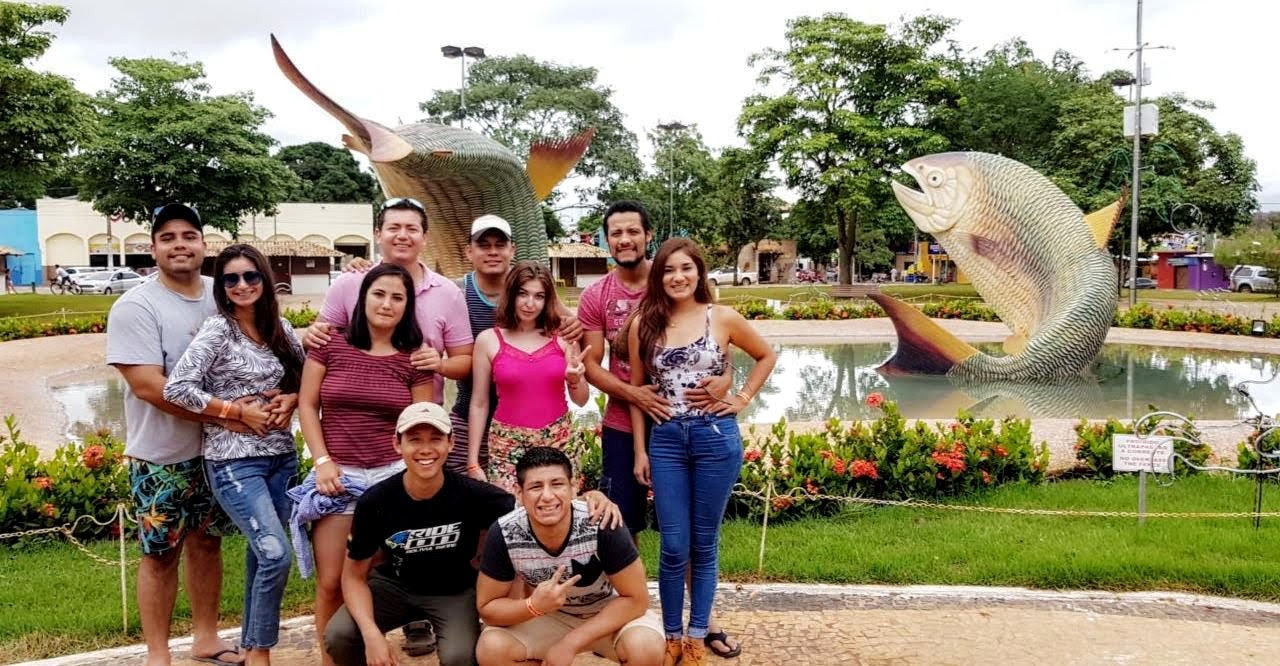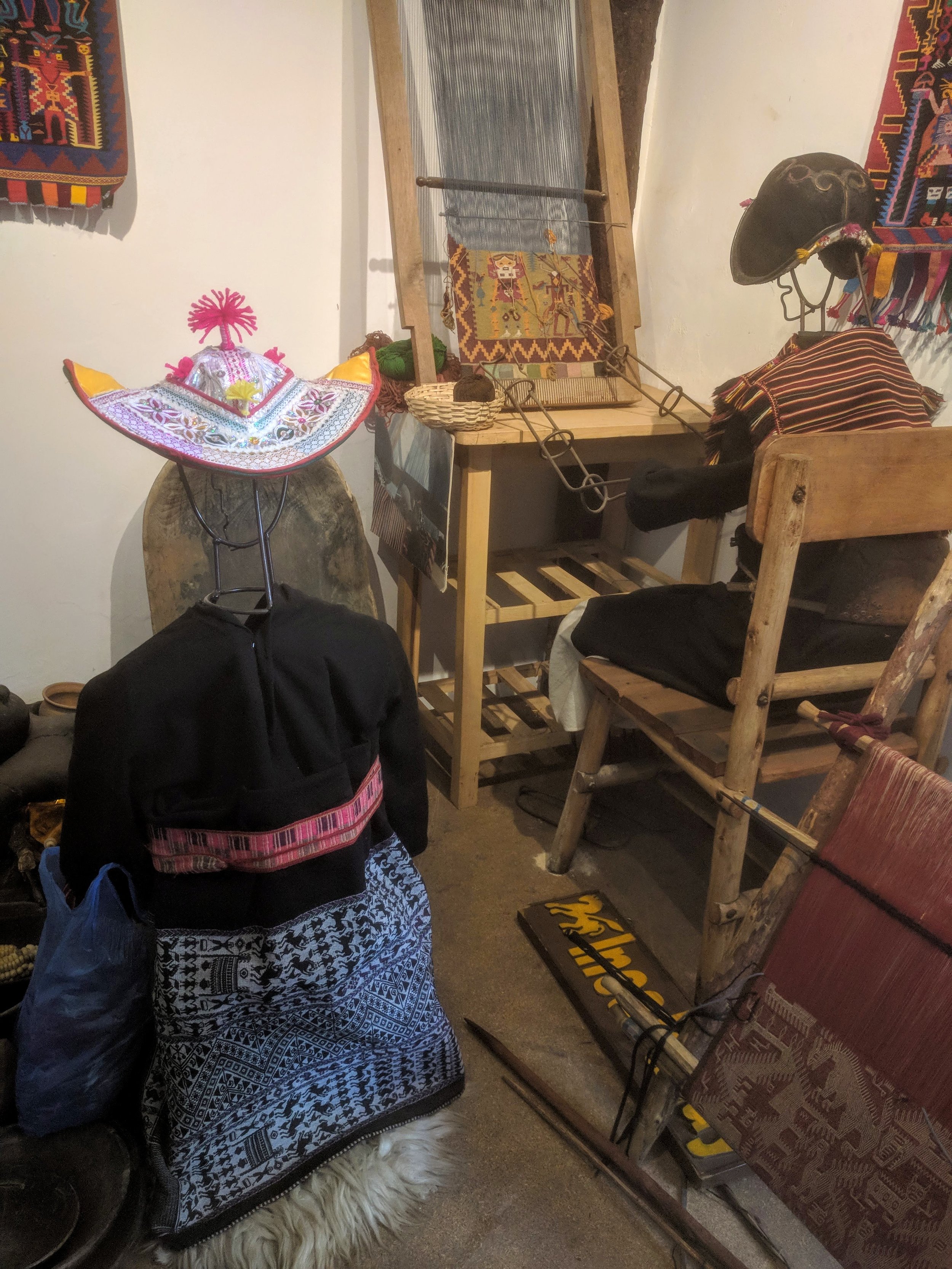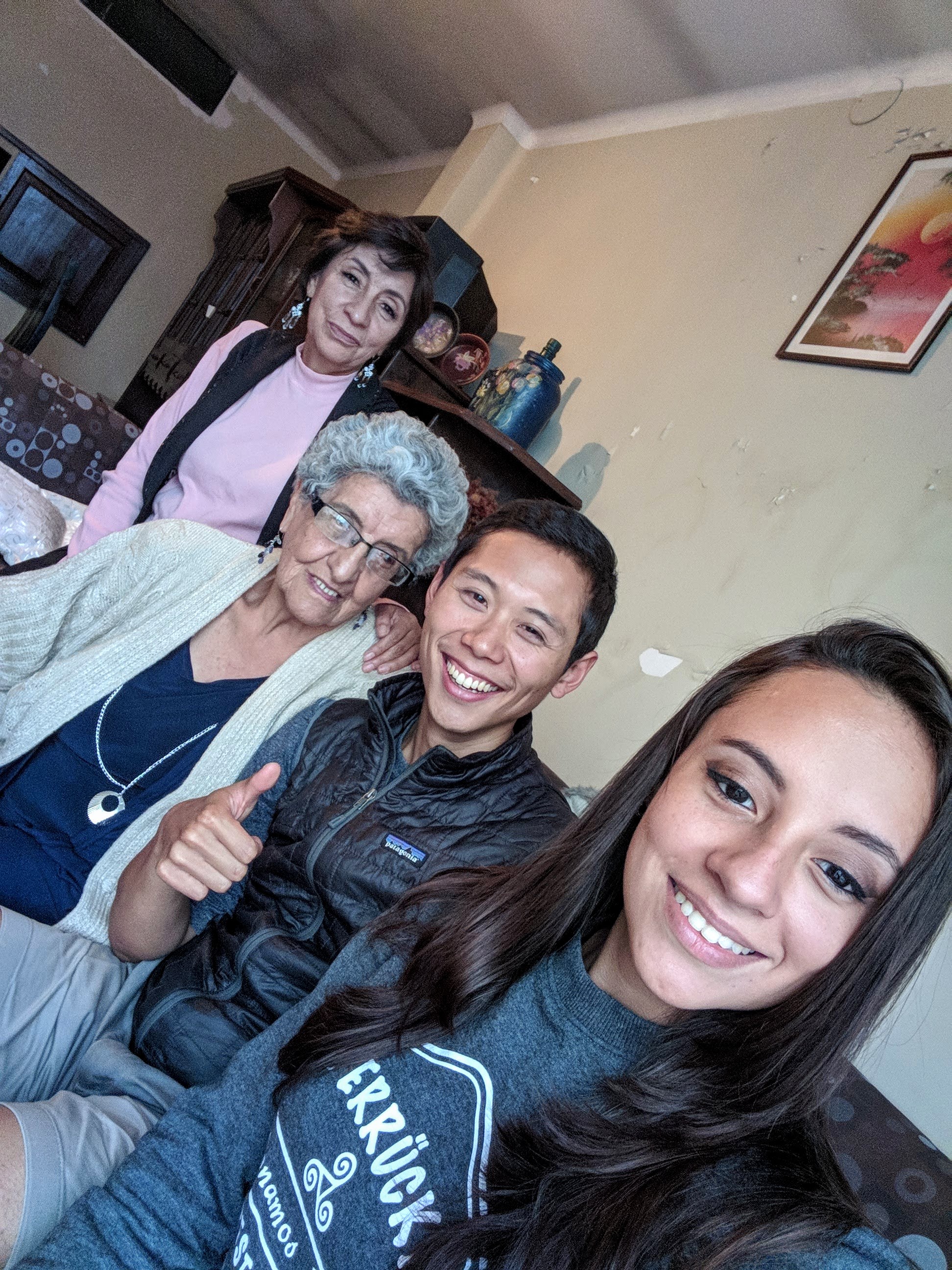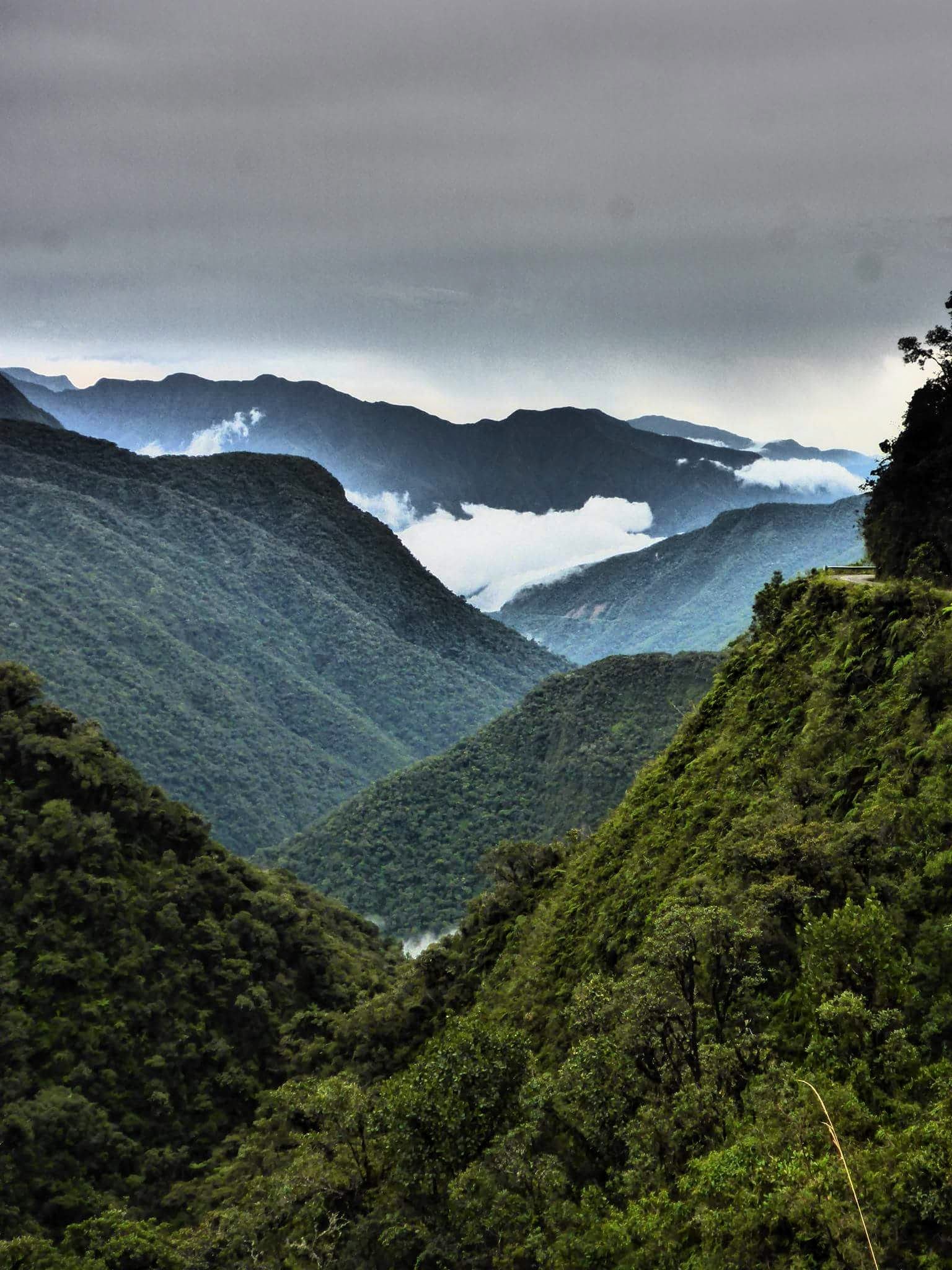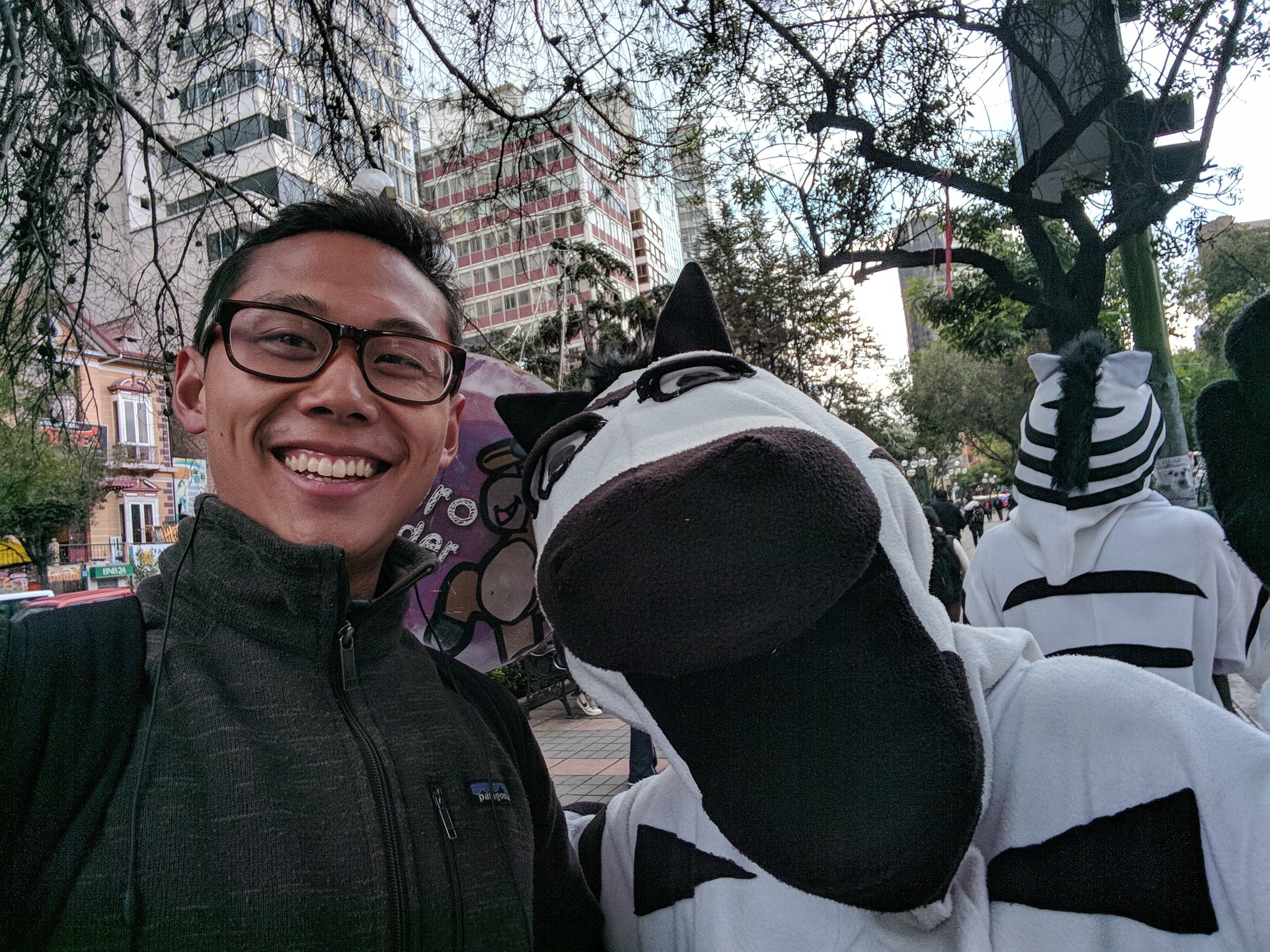One could say Bolivia is the under-appreciated stepsister of Peru. I've heard it called a poor man's Peru. Or the Wild West of Peru (disclaimer: Bolivia is actually to the east).
Let's start with the similarities:
1. Altiplano- The second largest high plateau in the world (Tibetan Plateau is the highest) sits between Peru, Bolivia, and a small slice of Northern Chile. Thus, these areas share the same economic activities: mining, llama/alpaca/vicuna herding, and growing a mind-bogglingly array of potatoes and corn.
2. Indigenous- Both countries are a melting pot of the indigenous Quechua, the main language of the Incas, and Aymara peoples, intermingled with the inescapable influence of the Spanish.
3. Gringo Trail- Everybody's favorite Gringo Trail extends from Peru into Southwestern Bolivia.
4. Food- The cooking techniques, ingredients, and flavors in Bolivia are comparable to Peru's best. Throw in a bevy of traditional but unusual drinks that incorporate both sweet and savory like white corn, purple corn, peaches and cinnamon, flax, peanuts, and I was more than happy eating my way through the country.
5. A star attraction- Salar de Uyuni is Bolivia's Machu Pichu, a destination that is intimately tied to the invocation of the country's name. Take the beauty and expansiveness of an ocean view, but instead of water, add a sea of glistening white salt.
6. Value- In the Gastronomy post, I introduced a budget metric, the cost of eating out for one meal divided by the cost of a night's accommodation. In Peru, that ratio was 30% ($3.00 per meal / $10 per night). Bolivia was on equal on food costs and slightly cheaper for accommodations.
But there's also reasons why Bolivia is the stepsister... why it's a third of the population of Peru and only draws a third of the international visitors too.
1. Land-locked- Bolivia has no coast. Lake Titicaca is shared with Peru. Fittingly, the second-largest lake, Lake Poopó, is dried up! This also means that fresh seafood is lacking, which is objectively worse for any cuisine, and what sets Peruvian cuisine apart.
2. Infrastructure- As a backpacker, one of the more noticeable aspects of lacking infrastructure was the condition of roads and buses. Abandoned railroads are a tourist attraction. There's no subway in the country, unless you count the subway in the sky. On the snooty end, I took more cold than hot showers. Electricity was fleeting. Wifi was slow and spotty. Flush with a bucket.
3. Dietary hygiene- My stomach was in a constant state of discomfort, a more tasteful description of traveler's diarrhea. And it wasn't just the street food. I got food poisoning from restaurants. I think I even got poisoned by bread. Impressive, no? Every traveler I met had issues. I'd eaten pretty questionable street food across Southeast Asia, so I thought I would be able to handle Bolivia. Wrong!
4. Lowest GDP per capita in South America- It's frustrating that Bolivia is one of the most mineral-rich countries in the world. Back in the 16th century, Potosi was one of the biggest and richest cities in the world, accounting for 60% of the world's mined silver. But today, it's a shell of what it could and should be. The Spanish forced locals to work in horrendous mine conditions and grabbed all the silver. That attitude of remorseless plunder has dominated the country's history. Now, the focus has shifted to natural gas and lithium, with production and export skyrocketing since the late 1990's. But the lack of infrastructure, back-and-forth privatization/nationalization, and corruption all leave the country mired in uncertainty.
5. Friendliness- Whether you're on the street, the store, or anywhere really... Bolivians don't exude a welcoming air, at least not outwardly. Folks don't smile. The default is a hard stare, which takes some getting used to. It manifests itself in other ways too. Shopkeepers don't negotiate on prices, or give change for 100 Boliviano bills ($15). What happened to 'the customer is king'?
Then again, it's never fair to compare countries against each other. Bolivia is a tougher nut to crack, but the reward is worth it.
The seemingly lack of friendliness is just a surface barrier. Bolivians aren't short on warmth, personality, and quirkiness. I had the privilege of having many insightful conversations with locals, undoubtedly enabled by taking two weeks of Spanish lessons in Sucre, a hub of high-quality and bargain-priced Spanish schools. It was one of the most rewarding experiences I've had in South America. Through the school, I stayed with a host family and we chatted about everything under the sun. The golden rule of traveling- the local experience is always the best experience.
Tradition runs deep and wide. Cholitas, indigenous women dressed in vibrant traditional clothing, line the streets. The way of life and history are well-preserved. The president even decreed that schools teach the indigenous languages of Aymara or Quechua. People have a strong sense of ethnic identity and pride, and they have the superstitions to back it! Many locals refuse to stand in front of a camera, believing that picture-taking steals souls. That's funny, because I too believe today's Instagram culture is indeed stealing our souls and literally killing experiences.
Bolivia was unquestionably one of my favorite backpacker experiences. It wasn't always the most welcoming, amenable, or smooth. It was frequently the opposite. But I connected with the people, and there's so much that's unique to the country (zebras help you cross the street). Plus, the largely untouched natural beauty is unrivaled across the salt flats, the high plains in the Southwest, the Andes slicing through the middle, the lowland in the East, and the Amazon in the North. I saw what it means to fiercely love your country, with all it's craziness and shortfalls. Bolivia is a rollercoaster that surprises at every turn. It's off the beaten path, but in the next decade it'll be a must-visit destination. It's got everything, you just have to work a little harder and dig a little deeper.
